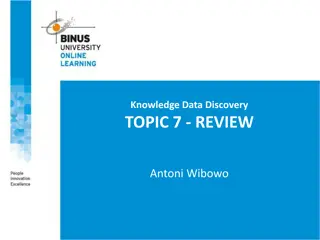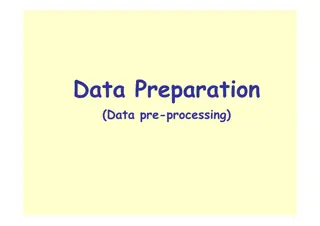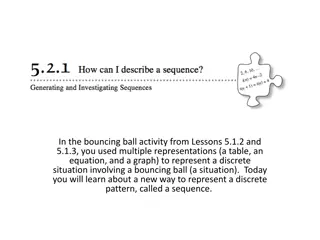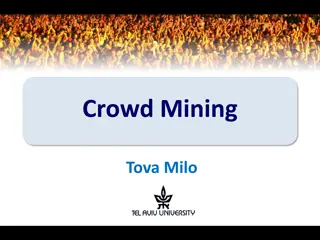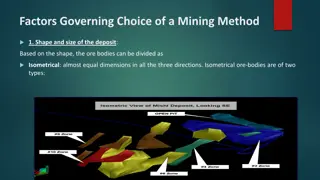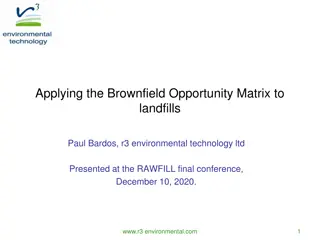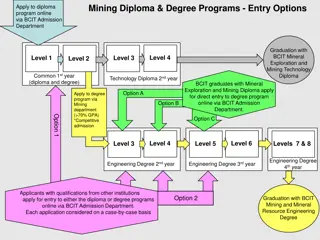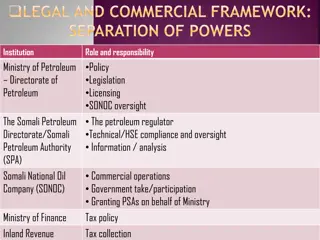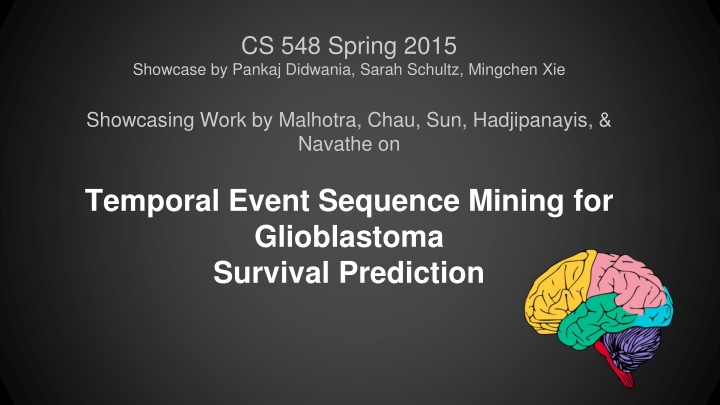
Temporal Event Sequence Mining for Glioblastoma Survival Prediction
This showcase presents the work on temporal event sequence mining for predicting glioblastoma survival. It covers the background, authors' contributions, data methods, analysis, and results, aiming to formulate predictive models for patient survival. Utilizing existing algorithms, the study focuses on significant treatment patterns to enhance survival prediction for this aggressive brain cancer. Key aspects include understanding glioblastoma, current treatment methods, patient data representation, and the data-driven approach adopted in the research.
Download Presentation

Please find below an Image/Link to download the presentation.
The content on the website is provided AS IS for your information and personal use only. It may not be sold, licensed, or shared on other websites without obtaining consent from the author. If you encounter any issues during the download, it is possible that the publisher has removed the file from their server.
You are allowed to download the files provided on this website for personal or commercial use, subject to the condition that they are used lawfully. All files are the property of their respective owners.
The content on the website is provided AS IS for your information and personal use only. It may not be sold, licensed, or shared on other websites without obtaining consent from the author.
E N D
Presentation Transcript
CS 548 Spring 2015 Showcase by Pankaj Didwania, Sarah Schultz, Mingchen Xie Showcasing Work by Malhotra, Chau, Sun, Hadjipanayis, & Navathe on Temporal Event Sequence Mining for Glioblastoma Survival Prediction
Sources Main paper: Malhotra, K., Chau, D. H., Sun, J., Hadjipanayis, C., & Navathe, S. B. Temporal Event Sequence Mining for Glioblastoma Survival Prediction in Proceedings of the ACM SIGKDD Workshop on Health Informatics, New York, NY, 2014. Other sources: American Brain Tumor Association, (2014), Glioblastoma (GBM) [Online], Available: http://www.abta.org/brain-tumor-information/types-of-tumors/glioblastoma.html N.R. Cooke, Use and misuse of the receiver operating characteristic curve. Circulation vol. 115, no. 7 pp. 928-935, 2007.
The flow of this Showcase Background Authors Contribution Data Methods Analysis and Results Conclusion
Background What is Glioblastoma Multiforme (GBM)?? It is the most lethal type of brain cancer. It is biologically the most aggressive subtype of malignant gliomas. From a clinical perspective, gliomas are divided into four grades and the most aggressive of these is GBM or grade IV glioma and is most common in humans.
Background Current treatment: - Surgical resection - Difficult to completely remove - Radiation therapy and chemotherapy - Oral medication Temodar The median survival rate for GBM is one year
This Paper[1]sContribution Formulate the problem of predicting which patients will survive more than a year Leverage the existing sequential pattern mining algorithms and tailor them to mine significant treatment patterns from the available treatment data Adopt a data driven approach to build and evaluate a predictive model [1] (Malhotra, Chau, Sun, Hadjipanayis, & Navathe, 2014)
Data Representation 300 patients extracted from TCGA spanning over a period of 2 years. Includes: o Demographic information o Clinical features o Treatment o Vital status of patient (living/deceased) Analysis includes o Drugs prescribed and dosage o Therapy type and dates for treatment Represented by graph o Nodes: patient and treatment o Edges: prescription and sequence
Predictive Modeling Pipeline Data Standardization and Cleaning Sequential Pattern Mining Feature Construction Prediction and Evaluation
Data Cleansing and Preparation Impute missing start or end dates for drug treatments. If both missing, delete this instance. Standardize elements such as gender or drug name with different nomenclature in different places Leave out living patients with last visit within 365 days, since survival is unknown
Sequential Pattern Mining Sequence of drugs/radiation prescribed. Time of drug prescription.
Example Sequences Figure taken from (Malhotra, Chau, Sun, Hadjipanayis, & Navathe, 2014)
Modeling Pipeline Figure taken from (Malhotra, Chau, Sun, Hadjipanayis, & Navathe, 2014)
Predictive Modeling Pipeline - Algorithm Figure taken from (Malhotra, Chau, Sun, Hadjipanayis, & Navathe, 2014)
Feature Construction The clinical and the genomic datasets consists of both numeric and categorical data types. To standardize the data set the dataset was converted into a binary feature matrix. This was achieved by using the categorical data values as features in the feature vector and creating bins for numeric features such as Age, KPS scores, mRNA expression z-scores, etc. E.g Age (in years) which was a numeric value was represented as 4 bins `Age < 25' , `25 < Age < 50', `50 < Age < 75' and 'Age > 75' which were treated as features.
Feature Construction Significant sequence patterns are identified that were obtained in sequential mining module in the feature vector. Each significant treatment pattern is treated as a feature. Patients who exactly received that treatment = 1; Rest = 0. The target variable in our study is constructed based on the patient's survival period. `days to death' = number of days between the date of diagnosis and the death of the patient `days to last follow up' = the number of days between the date of diagnosis and the date of the last follow up with the clinician.
Feature Construction For deceased patients `days to death' is the indicator of the survival period. Deceased patients who survived for more than a year are assigned a target variable of `1 those who survived for less than a year are assigned `0'. For living patients if the `days to last follow up' is greater than a year then we assign them a target variable of `1 else we discard that patient since we cannot positively conclude anything about the survival period.
Results Total Number of Patients: 300 Classified in two categories: Surviving Less Than a Year Surviving More Than a Year For this study there are three domains of features `Clinical' , `Genomic' and `Treatment'.
Results C-statistic- same as AUC Table taken from (Malhotra, Chau, Sun, Hadjipanayis, & Navathe, 2014)
Analysis GABRA1 gene is indicative of survival rate Older patients, especially the ones above the age of 75, have lesser chance of surviving for more than a year. Standard first line of treatment for GBM patients consists of chemotherapy with Temodar coupled with radiation therapy. o Found that radiation by itself as second treatment led to lower survival rate A positive influence on survival was observed with Procarbazine when prescribed second in the treatment
Conclusion Of the genomic features patient's age is the only clinical feature, which was selected by the model. Amongst the treatment patterns, prescription of radiation therapy, CCNU and Procarbazine followed by stoppage of treatment seemed to influence survival.
Moving forward This is a preliminary step in finding treatment guidance Currently the treatment patterns consist of the drug names and their event of prescription In the future enhance the model with more features: o gap between prescription of drugs o overlapping therapies o filtering clinically insignificant patterns at an early stage, etc.










